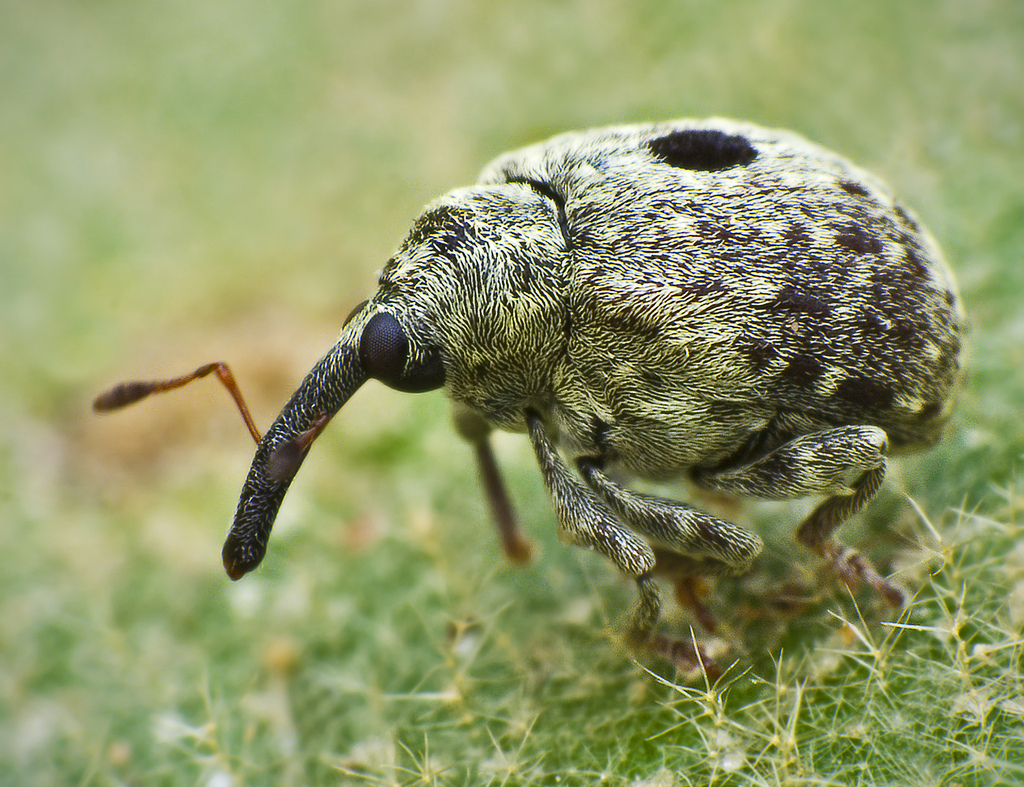|
Cryphalogenes Exiguus
''Cryphalogenes exiguus'', is a species of weevil found in Sri Lanka. Description Similar to much larger species ''Cryphalogenes euphorbiae ''Cryphalogenes euphorbiae'', is a species of weevil Weevils are beetles belonging to the superfamily Curculionoidea, known for their elongated snouts. They are usually small – less than in length – and herbivorous. Approximately 97,00 ...''. Length of the male is about 0.8 to 1.0 mm. Body dark brown. Frons strongly convex with small less conspicuous granules. Pronotum strongly reticulate. Pronotal and elytral granules are large. Surface largely reticulate, and feebly granulate moderate minute punctures. Antennal club slightly longer than scape. Pronotum with almost straight sides and parallel on basal third with reticulate, shiny, granules in posterior areas. Elytra long as pronotum and with almost straight sides. Elytral striae not impressed, each puncture largely replaced by a large rounded granule. Elytral interstriae a ... [...More Info...] [...Related Items...] OR: [Wikipedia] [Google] [Baidu] |
Curculionidae
The Curculionidae are a family of weevils, commonly called snout beetles or true weevils. They are one of the largest animal families with 6,800 genera and 83,000 species described worldwide. They are the sister group to the family Brentidae. They include the bark beetles as the subfamily Scolytinae, which are modified in shape in accordance with their wood-boring lifestyle. They do not much resemble other weevils, so they were traditionally considered a distinct family, Scolytidae. The family also includes the ambrosia beetles, of which the present-day subfamily Platypodinae was formerly considered the distinct family Platypodidae. Description Adult Curculionidae can be recognised by the well-developed, downwards-curved snout (Rostrum (anatomy), rostrum) possessed by many species, though the rostrum is sometimes short (e.g. Entiminae). They have elbowed Antenna (biology), antennae that end in clubs, and the first antennal segment often fits into a groove in the side of the rost ... [...More Info...] [...Related Items...] OR: [Wikipedia] [Google] [Baidu] |
Cryphalogenes Euphorbiae
''Cryphalogenes euphorbiae'', is a species of weevil Weevils are beetles belonging to the superfamily Curculionoidea, known for their elongated snouts. They are usually small – less than in length – and herbivorous. Approximately 97,000 species of weevils are known. They belong to several fa ... found in Sri Lanka. Description Similar to much smaller species '' Cryphalogenes exiguus''. Length of the male is about 1.2 to 1.4 mm. Body dark brown. Frons broadly convex. Surface largely reticulate, and feebly granulate moderate minute punctures. Antennal club slightly longer than scape. Pronotum with almost straight sides and parallel on basal third. Anterior margin of the pronotum armed by about four to six irregular, and poorly formed serrations. Vestiture of fine short, semirecumbent hair. Elytra long as pronotum and with almost straight sides. Elytral striae not impressed, each puncture largely replaced by a large rounded granule. Elytral interstriae as wide as stri ... [...More Info...] [...Related Items...] OR: [Wikipedia] [Google] [Baidu] |
Insects Of Sri Lanka
Insects (from Latin ') are hexapod invertebrates of the class Insecta. They are the largest group within the arthropod phylum. Insects have a chitinous exoskeleton, a three-part body (head, thorax and abdomen), three pairs of jointed legs, compound eyes, and a pair of antennae. Insects are the most diverse group of animals, with more than a million described species; they represent more than half of all animal species. The insect nervous system consists of a brain and a ventral nerve cord. Most insects reproduce by laying eggs. Insects breathe air through a system of paired openings along their sides, connected to small tubes that take air directly to the tissues. The blood therefore does not carry oxygen; it is only partly contained in vessels, and some circulates in an open hemocoel. Insect vision is mainly through their compound eyes, with additional small ocelli. Many insects can hear, using tympanal organs, which may be on the legs or other parts of the body. Th ... [...More Info...] [...Related Items...] OR: [Wikipedia] [Google] [Baidu] |

